Unsolved Mystery Of The Giant Footprints Outside The Ain Dara Temple
Ellen Lloyd - AncientPages.com - Outside the Ain Dara temple's entrance is a pair of giant footprints. It remains unknown who made them and why they were carved.
Our ancestors' conviction that superhuman beings gigantic in size once roamed the Earth is repeatedly reflected in ancient myths and legends.
Ain Dara, located northwest of Aleppo, Syria, an Iron Age Syro-Hittite temple. Image credit: Institute for the Study of the Ancient World Contact - CC BY 2.0
The once magnificent Ain Dara temple, or what's left, first attracted attention in 1955 when a monumental basalt lion was accidentally discovered.
If we travel to the village of Ain Dara, northwest of Aleppo, Syria, we come across an Iron-Age temple. The temple was later excavated between 1980 and 1985 and has often been compared to King Solomon's Temple.
As the Bible History Daily states, "the similarities between the 'Ain Dara temple and the temple described in the Bible are striking. Both buildings were erected on massive artificial platforms at the highest point in their respective cities.
The buildings likewise have similar tripartite plans: an entry porch supported by two columns, the main sanctuary hall (the hall of the 'Ain Dara temple is divided between an antechamber and the main chamber), and then, behind a partition, an elevated shrine, or Holy of Holies.
Colossal basalt lion found in 1955. (Ain Dara, Syria). Image credit: Materialscientist - CC BY 2.0
They were also both flanked on three of their sides by a series of multistoried rooms and chambers that served various functions."
However, although the Ain Dara temple shares many features with King Solomon's temple, it's unlikely it was the same building.
According to the excavator, Ali Abu Assaf, the Ain Dara temple existed for 550 years, from about 1300 BC. to 740 BC.
Archaeologists still cannot agree on the deity to whom the temple was dedicated. Some believe that it was dedicated to Ishtar, the goddess of fertility. Others suggest that it was the goddess Astarte, owner of the sanctuary. Yet, another group means it is likely that the temple holder was the god Baal Hadad.
The Ain Dara temple has several beautifully preserved structural features, including limestone foundations and blocks of basalt.
Reconstructed wall of Ain Dara Temple with cherubim relief in lower panel. Image credit: Odilia - CC BY-SA 3.0
Originally the building also had mudbrick covered with wood paneling, but today it's unfortunately lost.
The facade and interior walls are enlivened by hundreds of finely carved reliefs depicting lions, cherubim, mythical creatures, mountain gods, palmettes, and ornate geometric designs.
A pair of carved giant footprints are at the threshold of the entrance of the Ain Dara temple. They are about one meter long and face toward the temple's interior.
Like Solomon's Temple, the 'Ain Dara temple was approached by a courtyard paved with flagstones. The left footprint was carved on the flagstone, indicating that the god was entering the temple. The right impression was carved at the threshold to the cella, telling that the giant god needed only two steps to enter the temple.
Giant footprints outside the Ain Dara Temple. Credit: Verity Cridland - CC BY 2.0
The distance between the two single footprints is about 30 feet.
A stride of 30 feet would belong to a person (or goddess) about 65 feet tall. The temple is large enough for the god to enter and dwell in.
However, they were unlikely left by a being that entered the temple. The giant footprints remain an unsolved puzzle.
Scholars do not know why they were carved and what purpose they served. Some scientists have suggested that footprints can be designed to recall the presence of the gods, a sort of iconic representation of the deity. Although this is not a genuine pair of giant footprints, the carving is real, and it suggests our ancestors were familiar with and witnessed beings of gigantic size. Another possibility is that the huge footprints have a symbolic meaning.
Written by - Ellen Lloyd – AncientPages.com
Updated on April 2, 2023
Copyright © AncientPages.com All rights reserved. This material may not be published, broadcast, rewritten or redistributed in whole or part without the express written permission of AncientPages.com
More From Ancient Pages
-
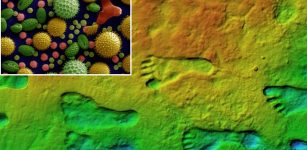 Humans Got To America 7,000 Years Earlier Than Thought – New Research Confirms
Archaeology | Oct 9, 2023
Humans Got To America 7,000 Years Earlier Than Thought – New Research Confirms
Archaeology | Oct 9, 2023 -
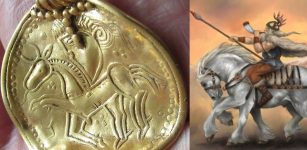 Discovered Gold Pendant Of Odin And His Horse Sleipnir Might Be Linked To The Heruli Tribe
Archaeology | Apr 16, 2016
Discovered Gold Pendant Of Odin And His Horse Sleipnir Might Be Linked To The Heruli Tribe
Archaeology | Apr 16, 2016 -
 Is There An Ancient Secret Connection Between The Statue Of Liberty And The Anunnaki Goddess Inanna?
Featured Stories | Sep 28, 2018
Is There An Ancient Secret Connection Between The Statue Of Liberty And The Anunnaki Goddess Inanna?
Featured Stories | Sep 28, 2018 -
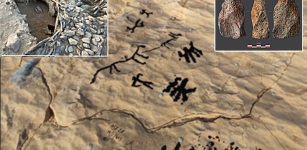 Unique Finds Discovered In Oman – Rub’al-Chali Desert Reveals Its Secrets
Archaeology | Apr 20, 2023
Unique Finds Discovered In Oman – Rub’al-Chali Desert Reveals Its Secrets
Archaeology | Apr 20, 2023 -
 Discovery Of Second Viking Site Point Rosee In North America Could Re-Write Ancient History
Archaeology | Apr 1, 2016
Discovery Of Second Viking Site Point Rosee In North America Could Re-Write Ancient History
Archaeology | Apr 1, 2016 -
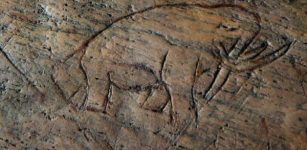 Controversial Study Of Ancient DNA Could Re-Write History Of South Florida And Prove Humans And Huge Prehistoric Animals Co-Existed
Archaeology | Sep 23, 2014
Controversial Study Of Ancient DNA Could Re-Write History Of South Florida And Prove Humans And Huge Prehistoric Animals Co-Existed
Archaeology | Sep 23, 2014 -
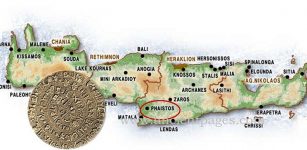 Is The Mystery Of Controversial Phaistos Disk Solved?
Archaeology | Dec 17, 2015
Is The Mystery Of Controversial Phaistos Disk Solved?
Archaeology | Dec 17, 2015 -
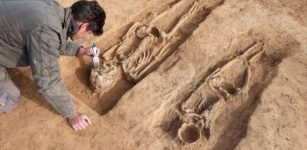 Mystery Of The Faceless Woman Found In A 1,000-Year-Old Royal Grave
Archaeology | Nov 7, 2023
Mystery Of The Faceless Woman Found In A 1,000-Year-Old Royal Grave
Archaeology | Nov 7, 2023 -
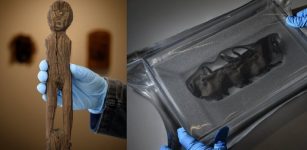 Ancient Artifacts Hidden Beneath The Ice In Danger As Glaciers Are Melting
Archaeology | Oct 19, 2020
Ancient Artifacts Hidden Beneath The Ice In Danger As Glaciers Are Melting
Archaeology | Oct 19, 2020 -
 Undersea Scans Reveal Astonishing Ancient Submerged World Of The Adriatic Sea
Archaeology | May 11, 2024
Undersea Scans Reveal Astonishing Ancient Submerged World Of The Adriatic Sea
Archaeology | May 11, 2024 -
 Is Biblical Mount Sinai Located In Har Karkom Where Mesopotamian Moon God Sin Was Worshipped?
Biblical Mysteries | Mar 20, 2017
Is Biblical Mount Sinai Located In Har Karkom Where Mesopotamian Moon God Sin Was Worshipped?
Biblical Mysteries | Mar 20, 2017 -
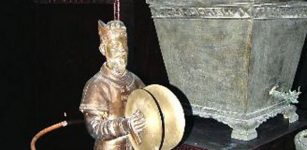 Highly Advanced Robots In Ancient China
Ancient Technology | Aug 7, 2015
Highly Advanced Robots In Ancient China
Ancient Technology | Aug 7, 2015 -
 Prometheus ‘Fire Bringer’ – Hero Stealing Fire From Gods Giving It To Mortals
Featured Stories | Sep 5, 2018
Prometheus ‘Fire Bringer’ – Hero Stealing Fire From Gods Giving It To Mortals
Featured Stories | Sep 5, 2018 -
 Gotu Kola – Extraordinary Ancient Herb That Increases Longevity And Improves Cognitive Abilities
Ancient Traditions And Customs | Mar 13, 2019
Gotu Kola – Extraordinary Ancient Herb That Increases Longevity And Improves Cognitive Abilities
Ancient Traditions And Customs | Mar 13, 2019 -
 Advanced Ancient Civilization’s Encounter With Primitive People Led To Something Extraordinary – Thought-Provoking Theory Suggests
Ancient Mysteries | Dec 19, 2018
Advanced Ancient Civilization’s Encounter With Primitive People Led To Something Extraordinary – Thought-Provoking Theory Suggests
Ancient Mysteries | Dec 19, 2018 -
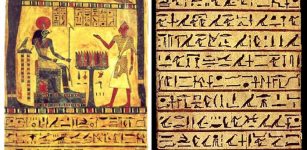 Strange History Of Stele Of Ankh-ef-en-Khonsu – ‘Stele Of Revealing’ Gave Birth To Thelema, A New Religion
Artifacts | Apr 3, 2018
Strange History Of Stele Of Ankh-ef-en-Khonsu – ‘Stele Of Revealing’ Gave Birth To Thelema, A New Religion
Artifacts | Apr 3, 2018 -
 Missing Piece Of A Linguistic Puzzle: Ancient DNA Identifies The Originators Of Indo-European Languages Spoken By 40% Of The World
DNA | Feb 12, 2025
Missing Piece Of A Linguistic Puzzle: Ancient DNA Identifies The Originators Of Indo-European Languages Spoken By 40% Of The World
DNA | Feb 12, 2025 -
 On This Day In History: Vatican Began 7-Year-Long Trial Against Giordano Bruno – On Jan 27, 1593
News | Jan 27, 2017
On This Day In History: Vatican Began 7-Year-Long Trial Against Giordano Bruno – On Jan 27, 1593
News | Jan 27, 2017 -
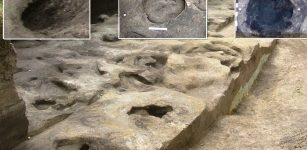 Sensational Discovery: 300,000-Year-Old Snapshot – Oldest Human Footprints From Germany Found
Fossils | May 12, 2023
Sensational Discovery: 300,000-Year-Old Snapshot – Oldest Human Footprints From Germany Found
Fossils | May 12, 2023 -
 Oldest Sea Reptile From Age Of Dinosaurs Found On A Remote Arctic Island
News | Apr 3, 2023
Oldest Sea Reptile From Age Of Dinosaurs Found On A Remote Arctic Island
News | Apr 3, 2023




